Huntington Castle, in the pretty village of Clonegal in Co Carlow, is a fascinating historical treasure. Today its keepers are Alexander Durdin Robertson, his wife, Clare, and their three young sons, Herbert, Esmonde and Freddie, direct descendants of the Esmonde family, who first constructed the Jacobean jewel.
The couple met when Alexander was an officer in the Irish Guards at the Tower of London. "He was actually in charge of minding the crown jewels when we first met – through a mutual friend – and invited us up to the tower for a drink," laughs Clare, who works as a textile artist from her studio on the castle grounds, in addition to helping run the 160-acre estate.
“As the officer in charge of the Ceremony of the Keys” – purported to be the oldest military ceremony in the world, in which the keys of the tower are taken to the queen’s house each evening – “I had the privilege of inviting guests for a picnic in the tower. That’s how I first met Clare, and we later married in 2008,” recalls Alexander.
Alexander also served in Iraq, Kuwait and Germany, before turning his skills to work as an oil broker, and subsequently became an environmental consultant. His father David, an antiques dealer and sculptor (many of his works are on display in the castle), died unexpectedly in 2011. As the eldest son, the keys of Huntington were passed to Alexander, and he and Clare returned to Ireland to run the estate.
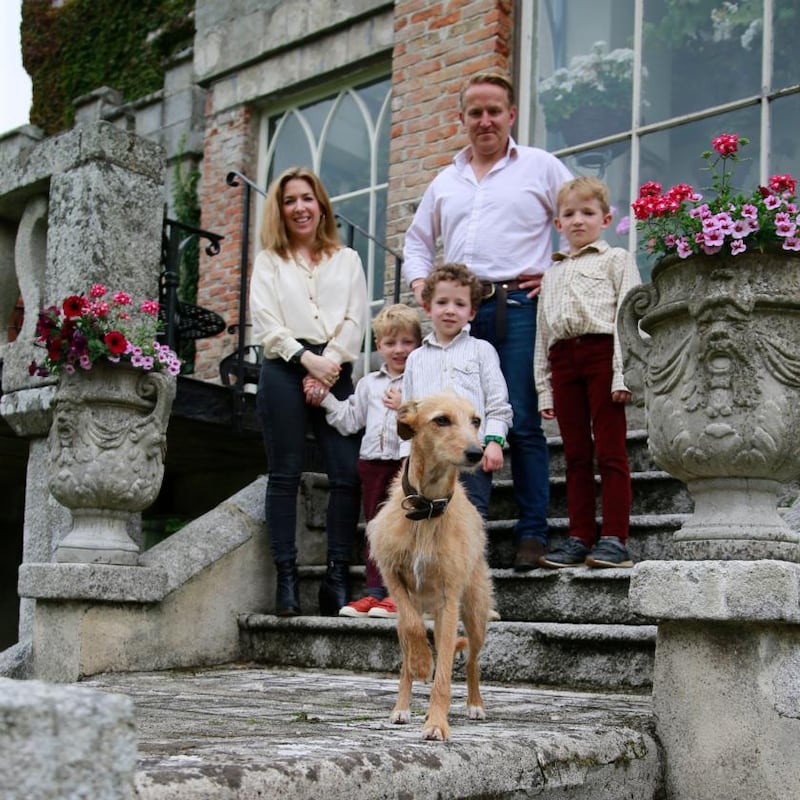
His mother, Moira, also an artist, now lives in a pretty converted coach-house in the courtyard, while his sister Sarah works as a television producer in the UK. His brother Matthew works as a consultant with the mining company Energold Drilling Corp, while the creative genes were inherited by his artist brother, Harry, who is represented by the Oriel Gallery in Dublin and Pip Simmons in the Bahamas.
Alexander worked as an environmentalist in tandem with introducing 600 sheep and some cattle to the estate, but now works full-time trying to make the estate pay for its upkeep. “I was working 16-hour days, and with three small boys it was really taking its toll.”
In doing so he and Clare have opened tea rooms and overnight accommodation for guests, in addition to castle and garden tours. (Huntington is also on Carlow Garden Trail.) A recently converted 17th-century barn now operates as a private theatre for concerts, christenings and small family gatherings, and the formal gardens are used as a wedding venue.
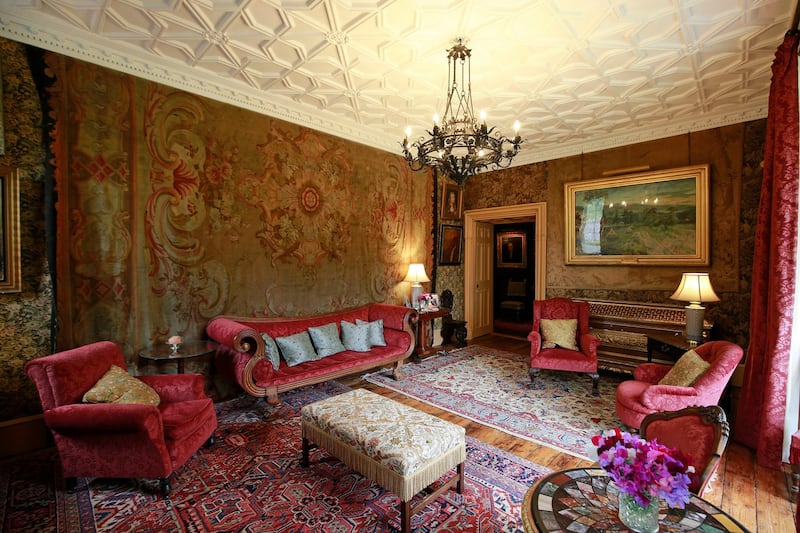
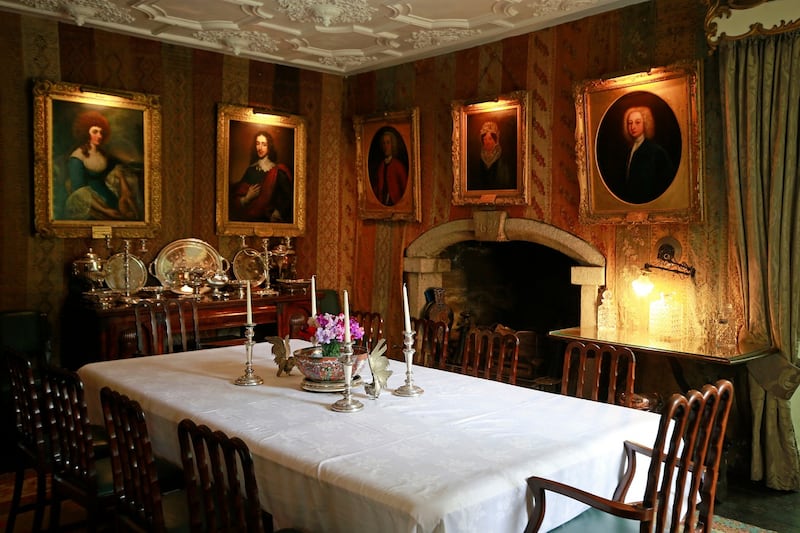
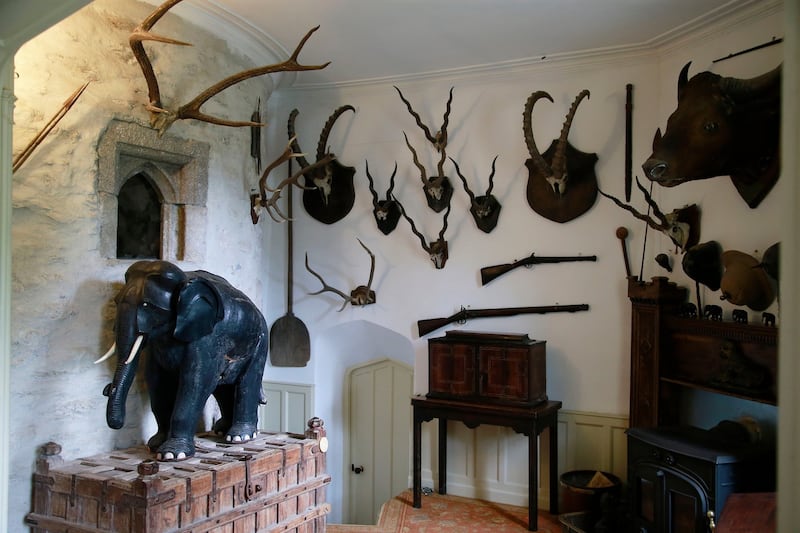
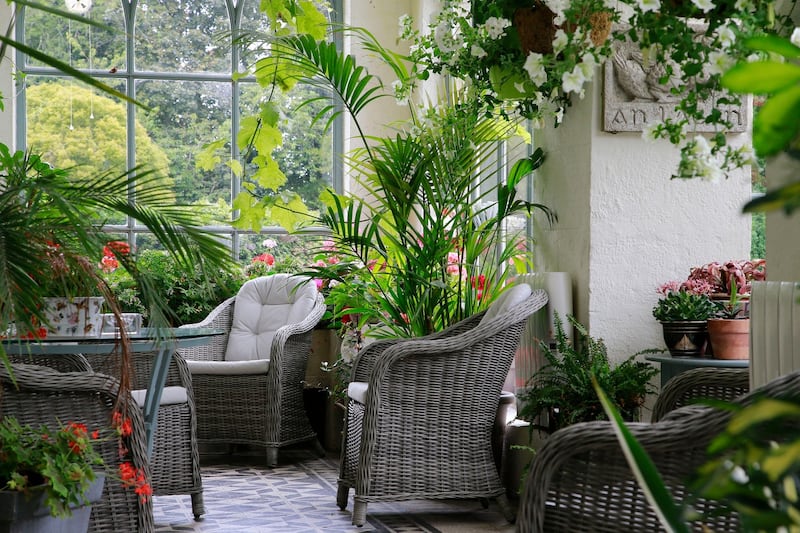
Built in 1625 by the first Lord Esmonde on the site of an older abbey, Huntington was initially constructed as a garrison, and later converted to a family home, which explains the turret set into the central hallway, and internal arrowslit windows, from its former military life.
As castles go, this is not your typical grand dame with large, imposing chambers, but rather creaky floorboards leading to cosy rooms filled to the brim like a time capsule, depicting a 400-year-old family legacy.
The gardens are worth a particular mention, especially the haunting line of 500-year-old yew trees, which form a natural archway to the rose terrace alongside the splendid Italian-style parterre. The ceiling of the conservatory, which overlooks the formal garden, is dappled with light through a vine taken from a cutting from the great vine at Hampton Court Palace, which had been gifted to Anne Boleyn by Cardinal Wolsey.
What is fascinating about the castle are the notable women associated with this slice of Carlow history, who paint colourful memories of the multifaceted granite keep.
The first chatelaine of Huntington was the free-spirited Ailish O'Malley, granddaughter of Grace O'Malley, Ireland's pirate queen, noted for her fierce independence and rejection of the typical roles of women in the 16th century
The first chatelaine of Huntington was the free-spirited Ailish O’Malley, granddaughter of Grace O’Malley, Ireland’s pirate queen, noted for her fierce independence and rejection of the typical roles of women in the 16th century. Ailish, a devout catholic who had married Lord Esmonde, left Huntington with her son Thomas to live in her native Connacht, but succeeded in ensuring Thomas inherited the castle after the death of Lord Esmonde, despite him being a Catholic.
In the diningroom, where the walls are lined with ancient Bedouin tents, a stained-glass window of the ancestral family tree dating from 1625 to 1758 depicts how two women in the family – both named Helen – inherited the castle over the years. This would have been unheard-of at that time, when women were considered chattels, with little rights of inheritance in patriarchal Ireland.
An old gharial crocodile head, displaying its 110 teeth, hangs in the castle's hallway alongside armoured breastplates, and tells the story of another dynamic woman, Nora Parsons, who was Alexander's great-grandmother. The feisty daughter of Sir Lawrence Parsons from Birr Castle, Nora eschewed the Victorian female stereotype to become a big-game hunter, shooting the crocodile in India at the age of 17. She later became a world-renowned salmon fisher, inventing a fishing fly known as the Black Maria, and also penned a book of memoirs entitled Crowned Harp.
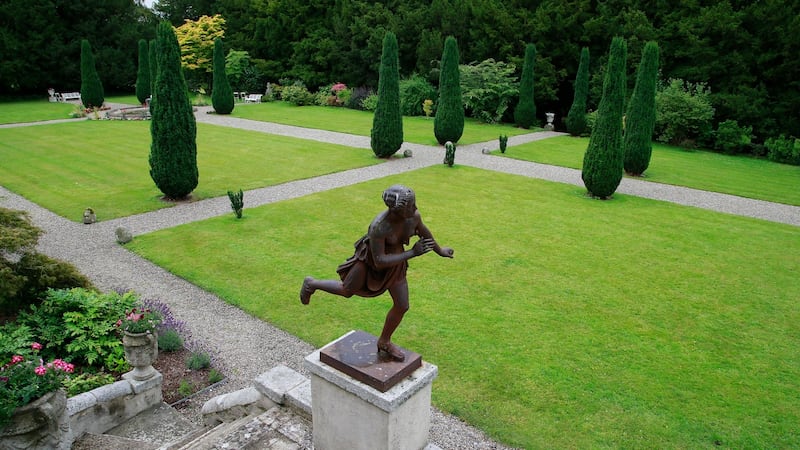
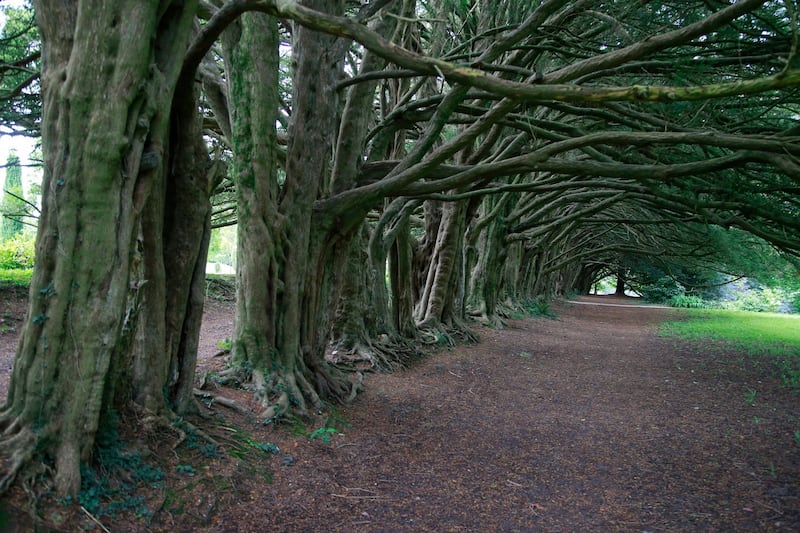
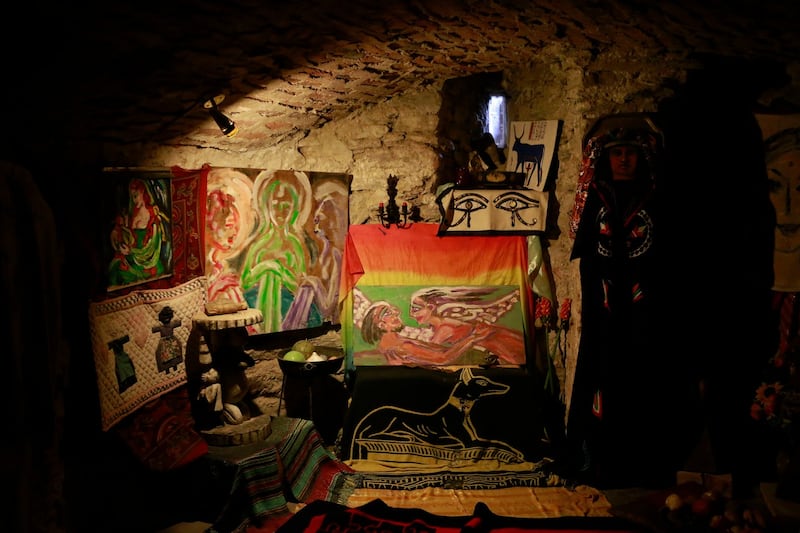
Her daughter Olivia, author and artist and Alexander’s great-aunt, volunteered as a nurse during the London blitz in the second World War, and then moved to Dublin, where she worked as a social worker in the Liberties. Here, as an artist, she captured the abject poverty of children at the time. But in doing so, she also drew the children clean-faced and dressed in fresh clothes, rather than in their grubby rags, as gifts for the families, many of whom were suffering the ravages of tuberculosis. Some of these sketches now grace the walls of the pretty guest rooms in the castle.
Olivia also established her own religion in the old dungeons of the castle. Known initially as the Temple of Isis, but recently changed to Temple of the Goddess to avoid confusion with Islamic State, the religion, founded in 1976, celebrates the divine feminine.
"Olivia and my grandfather Lawrence thought that organised religions were too patriarchal, so founded the religion based on feminine figures, especially around Brigid, Isis and the Virgin Mary," says Alexander. "At the time some people thought it was witchcraft, but Olivia and Lawrence, who was originally a Church of Ireland vicar, would have been in the company of their parents' friends, WB Yeats and George Russell, who had a deep interest in mysticism."
The Temple of the Goddess at its peak had over 30,000 followers in 90 countries, attracting many visitors over the years to celebrate the divine feminine, including Mick Jagger and Hugh Grant
The religion at its peak had over 30,000 followers in 90 countries, attracting many visitors to the temple over the years to celebrate the divine feminine, including Mick Jagger and Hugh Grant.
In the basement lies a deep well, adjacent to the Temple of Goddess. “This is the very reason that the castle was built on this spot, as it has its own water supply,” explains Alexander of the well which measures 17ft from crown to base, and is said to have healing properties. Known as St Brigid’s Well, after Ireland’s female patron saint who secured property rights for women, it is as if feminism has emanated from this source through the formidable women who have lived for centuries above it.
Maintaining such an estate is never-ending and costly, but Alexander and Clare have long-term plans for one of Carlow’s crown jewels . “We are currently restoring some of the outhouses and gate lodges as further guest accommodation, and have ideas to develop the grounds further. But our overall aim is to really try and preserve the authenticity of Huntington.”
With fireplaces dating from the 1600s, rooms lined with Bedouin tents and Aubusson tapestries, a 250-year-old vine from Hampton Court, a murder hole in the front door, along with tales of ghosts and a temple in the basement, it really doesn’t get any more authentic.






















